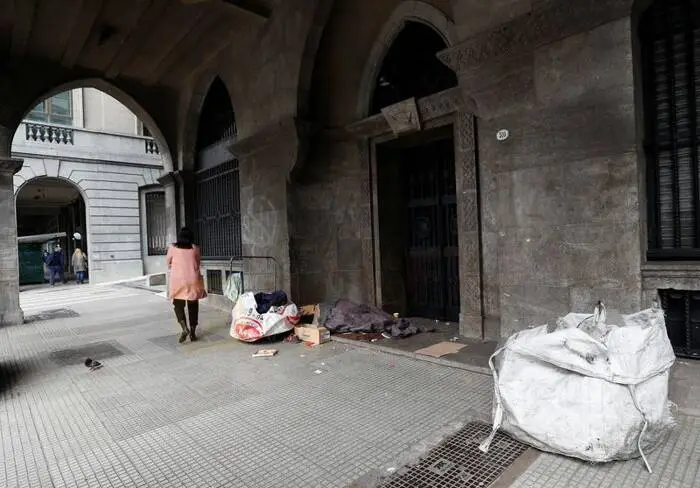简体中文
繁體中文
English
Pусский
日本語
ภาษาไทย
Tiếng Việt
Bahasa Indonesia
Español
हिन्दी
Filippiiniläinen
Français
Deutsch
Português
Türkçe
한국어
العربية
Argentina prepares to restrict imports amid foreign exchange shortage -source
Abstract:Argentina’s government will launch three measures in the coming days aimed at restricting imports and preserving the central bank’s dwindling foreign currency reserves, a source told Reuters on Tuesday.
Argentina‘s government will launch three measures in the coming days aimed at restricting imports and preserving the central bank’s dwindling foreign currency reserves, a source told Reuters on Tuesday.

The measures come as new data on Monday showed a trade deficit in July of $437 million, the second deficit in a row for Latin Americas third-largest economy.
“Smoother coordination is required between (Argentina‘s tax collection entity) AFIP, Customs and Commerce, with measures aimed at ordering imports, taking care of the Argentine central bank’s dollars and avoiding abuses,” said the source, who asked not to be identified.
Argentinas exports in the first seven months of the year increased by 22.4% compared to the same period in 2021, while imports jumped 44.6%.
One of the measures seeks to accelerate exports by reducing the time frame for those who import goods without paying taxes. The measure will reduce the time to export the goods to 120 days from 360.
This is the case of soybeans, which are imported in order to later be exported as oil.
The 115% gap between the official exchange rate used in foreign trade and the exchange rates in alternative markets encourages importers to increase their purchases from abroad, while exporters delay their settlements pending a further fall in the peso.
The government also contemplates making companies that import services such as software or consultancies enter an advanced declaration scheme.
In the first half of the year, Argentina imported services worth $5 billion.
President Alberto Fernandezs administration will also seek to curb imports of 34 goods, including slot machines, yachts, luxury planes and cryptocurrency mining machines, by incorporating them into a non-automatic licensing scheme, which requires prior authorization.
Disclaimer:
The views in this article only represent the author's personal views, and do not constitute investment advice on this platform. This platform does not guarantee the accuracy, completeness and timeliness of the information in the article, and will not be liable for any loss caused by the use of or reliance on the information in the article.
WikiFX Broker
Latest News
Canadian Watchdog Warns Against Capixtrade
FOREX.com Partners with Kalshi for Event-Based Trading on US Election
ATTENTION! WARNING AGAINST FRAUD BROKERS
The Importance of Backtesting in Forex Trading
Alameda Sues KuCoin to Reclaim $50M in FTX Asset Recovery Drive
The impact of the U.S. presidential elections on gold and Forex prices
The Role of Moving Averages in Trend Trading
AI-Driven Fraud: Social Media Fraud Reportedly Soars 28%
HKEX to Open Riyadh Office in 2025, Strengthening Ties Between China and the Middle East
Hong Kong Exchange Pioneers Asia's First EU-Compliant Crypto Index
Currency Calculator


